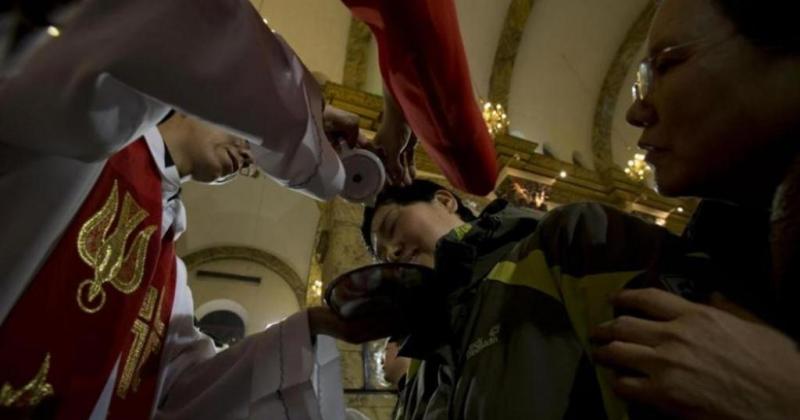The "Faith" Institute reports that last year more than 48,000 Catholics were baptized. A partial figure, which, however, seems to mark a trend reversal when compared to the analyses that claimed a reduction in the celebrations within Chinese communities between 2010 and 2014.
At least 48,365 baptisms were celebrated in churches and Catholic communities in the People's Republic of China in the year 2018. This is the number reported in the official publication of the Faith Institute for Cultural Studies, based in Shijiazhuang, the capital of the Chinese province of Hebei. The figures bring together data from 104 Catholic dioceses recognized by the Chinese authorities, scattered in more than 30 national provincial divisions. These data appear in substantial continuity with those of the previous year, when the Faith Institute had certified the celebration of 48,556 baptisms in the Chinese Catholic communities.
Also in 2018, as in previous years, the largest number of new Catholics baptized reported by the Faith institute (almost 13,000) was concentrated in the Chinese province of Hebei with other remarkable percentages of new baptisms celebrated in the Catholic communities of the provinces of Shanxi (4124), Sichuan (3707) and Shandong (2914). Faith institute also reported on baptisms celebrated in Catholic communities in the regions where Muslim populations and ethnic minority groups are found, such as Tibet (8 baptisms), Hainan (35), Qinghai (43) and Xinjiang (57).
Per articoli di qualità e senza pubblicità, unisciti a noi
The data on the baptisms of new Chinese Catholics - provided each year by the Institute around the Chinese New Year - are however partial and approximate. They do not manage to take into account all those celebrated in many Catholic communities present in the most isolated regions, nor all those administered in the so-called "underground" communities, those not registered with the Chinese apparatus that apply the governmental religious policy. Nevertheless, at the moment these data represent the most useful yet partial instrument to try to record year by year at least the trends of growth, stagnation or decrease of Catholics in Chinese society. The dossier on the Chinese Catholic population published in the spring of 2016 in the magazine Tripod by Anthony Lam Sui-ki, a researcher at the Holy Spirit Study Centre in Hong Kong, also made reference to them.
The annual reports on the new Catholics baptized provided year by year by the Faith Institute from 2000 onwards seem to have a fluctuating trend, with a growth recorded until 2010, and a significant decline that would have marked the years from 2010 to 2015. The last two years, with the data provided by the Faith institute, which claims nearly 50 thousand new baptisms, indicate a new trend reversal when compared to the declining trend of the five-year period 2010-2015. Furthermore, several observers agree on the decline in priestly and religious vocations in the Catholic Church in China with respect to the eighties and nineties, which had registered an increase in seminarians and novices. There were 2400 seminarians in 1996, while in 2014 they were estimated at 1260.
Proclamation of the Gospel and Parish registers
The growth or decline of members of a community of faith is also due to imponderable factors. And the anomalous condition experienced by the Church in China in the last 70 years has made and still makes it impossible to collect data and objectively verify the numerical consistency of the different communities and the trends of growth or decline in numerical terms. Commenting on the numbers collected on the new Catholics baptized in 2017, the leaders of the Institute described the proclamation of the Gospel in China as "a long and difficult path to carry out ", and invited all communities to improve the collection of data on the sacraments celebrated, always keeping their archives and parish registers up to date, so to always give valid accounts and tell clearly the history of their community and that of the entire Church in China.
The acquisition of data on the consistency of the different Christian communities in People's China has always been complicated and continues to be unable to count on effective criteria and systems of data-collection. The vagueness and lack of adequate means of verification also characterizes all the statements – which almost always do not provide objective evidence - about the increase in Chinese communities of evangelical-protestant descent, defined by many observers as exorbitant.
The phase begun with the partial agreement between Beijing and the Holy See on the nomination of Catholic bishops in People's China could progressively and patiently contribute to eliminating the factors that make the collection of information on the real numerical consistency of the Chinese Catholic communities so complicated and incomplete. Over time the Holy See will be able to help each individual Chinese dioceses to record aspects in a constant and objective manner. Bearing in mind that the same data on baptisms - as the Faith Institute stressed in 2018 - also represent a way "to see the growth of the church and the work of evangelization accomplished by Christ.".
